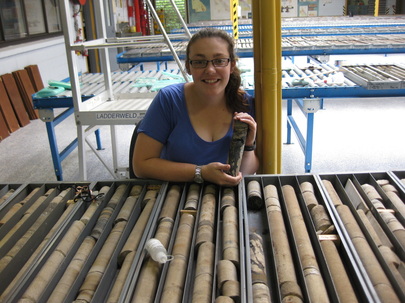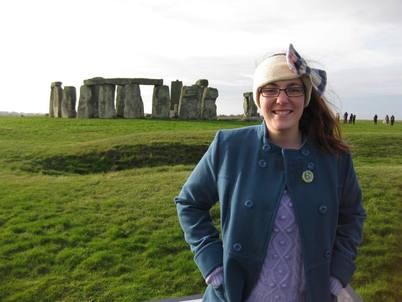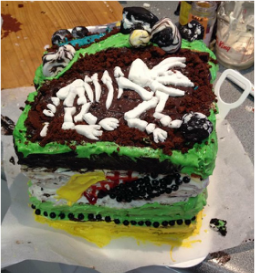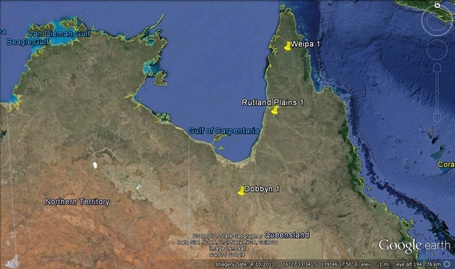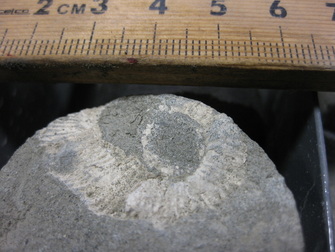Tylah Drochmann - Honours Student (Supervised by Eric Roberts)
A few months ago, somewhere between 2am hysteria in the geology lab and the sweet, sweet elation after deciding I was going to spend the next year of my life studying sand, I realised that I had changed. I used to spend my Saturday nights deliberating over what to wear, where to go and spent most of the night queuing everywhere I went. You meet a lot of interesting people in nightclub queues, not nearly as interesting though, as the folks you meet in a university geology department. Like the geologists who’ve walked the rocky path before me, by the way, pun ALWAYS intended, each rock has its own story of where it’s been, where it’s going and who it is. Rocks aren’t just rocks anymore, it’s a sick and sad realisation I have had, and I love it!
Three years ago, geology was a new notebook, fresh blank pages, edges un-spoiled and the spine un-creased. Now though, the pages are dirt brown, and dog-eared is an understatement. I am tumultuously caught in the web of geology that once you’re in, there’s no escape; not that anyone would want to anyway. It’s not uncommon these days, to hear the words, “10 million years? Whoah that was fast!” escaping my mouth. Geology opens up a whole new world and way of thinking that takes a bit to get your head around. Wading through my years of study have opened my eyes to this, though none more so than my first taste of research. Honours has opened my eyes to the seemingly terrifying research environment; I implore you to do the same.
Humans like to think of our world as fundamentally rational. The way we operate on a daily basis has been finely honed over thousands of years of evolution (whoah, that was fast); geology, as a general rule teaches you to throw away these notions of rationality, sometimes, things just shouldn’t exist…and yet they do! Herein lies the basis of the final straw in my geological metamorphosis. Some things in life just DO NOT belong together, for example, geology and baking (although the JCU geology department would argue otherwise at Tuesday morning tea!) . Yet again, geology changes everything; and almost justifies watching the cooking channel as research. Detrital zircon geochronology analysis of buttercream, here I come!
Three years ago, geology was a new notebook, fresh blank pages, edges un-spoiled and the spine un-creased. Now though, the pages are dirt brown, and dog-eared is an understatement. I am tumultuously caught in the web of geology that once you’re in, there’s no escape; not that anyone would want to anyway. It’s not uncommon these days, to hear the words, “10 million years? Whoah that was fast!” escaping my mouth. Geology opens up a whole new world and way of thinking that takes a bit to get your head around. Wading through my years of study have opened my eyes to this, though none more so than my first taste of research. Honours has opened my eyes to the seemingly terrifying research environment; I implore you to do the same.
Humans like to think of our world as fundamentally rational. The way we operate on a daily basis has been finely honed over thousands of years of evolution (whoah, that was fast); geology, as a general rule teaches you to throw away these notions of rationality, sometimes, things just shouldn’t exist…and yet they do! Herein lies the basis of the final straw in my geological metamorphosis. Some things in life just DO NOT belong together, for example, geology and baking (although the JCU geology department would argue otherwise at Tuesday morning tea!) . Yet again, geology changes everything; and almost justifies watching the cooking channel as research. Detrital zircon geochronology analysis of buttercream, here I come!
Honours research project: Sedimentology, stratigraphy and provenance of Jurassic and Cretaceous strata in the Carpentaria Basin, Australia
|
Project aims:
1. Form a comprehensive, descriptive sedimentary analysis of Jurassic and Early Cretaceous units in the Carpentaria basin by analysing drill cores and log data 2. Determine the sedimentary provenance, paleoenvironment, paleogeography and form more robust age constraints based on detailed facies analysis, paleocurrent data (where available), sandstone petrography and detrital zircon geochronology. Methods:
|
Research questions:
Further, the project will test the nature of the arc volcanic material to support positive evidence in a previous study:
The sedimentary provenance analysis will be focused by the following questions:
|
CONTACT ME:
For questions about my research, or even baking recommendations proven to win over geologists -
Email - [email protected]
LinkedIn - Tylah Drochmann
For questions about my research, or even baking recommendations proven to win over geologists -
Email - [email protected]
LinkedIn - Tylah Drochmann
